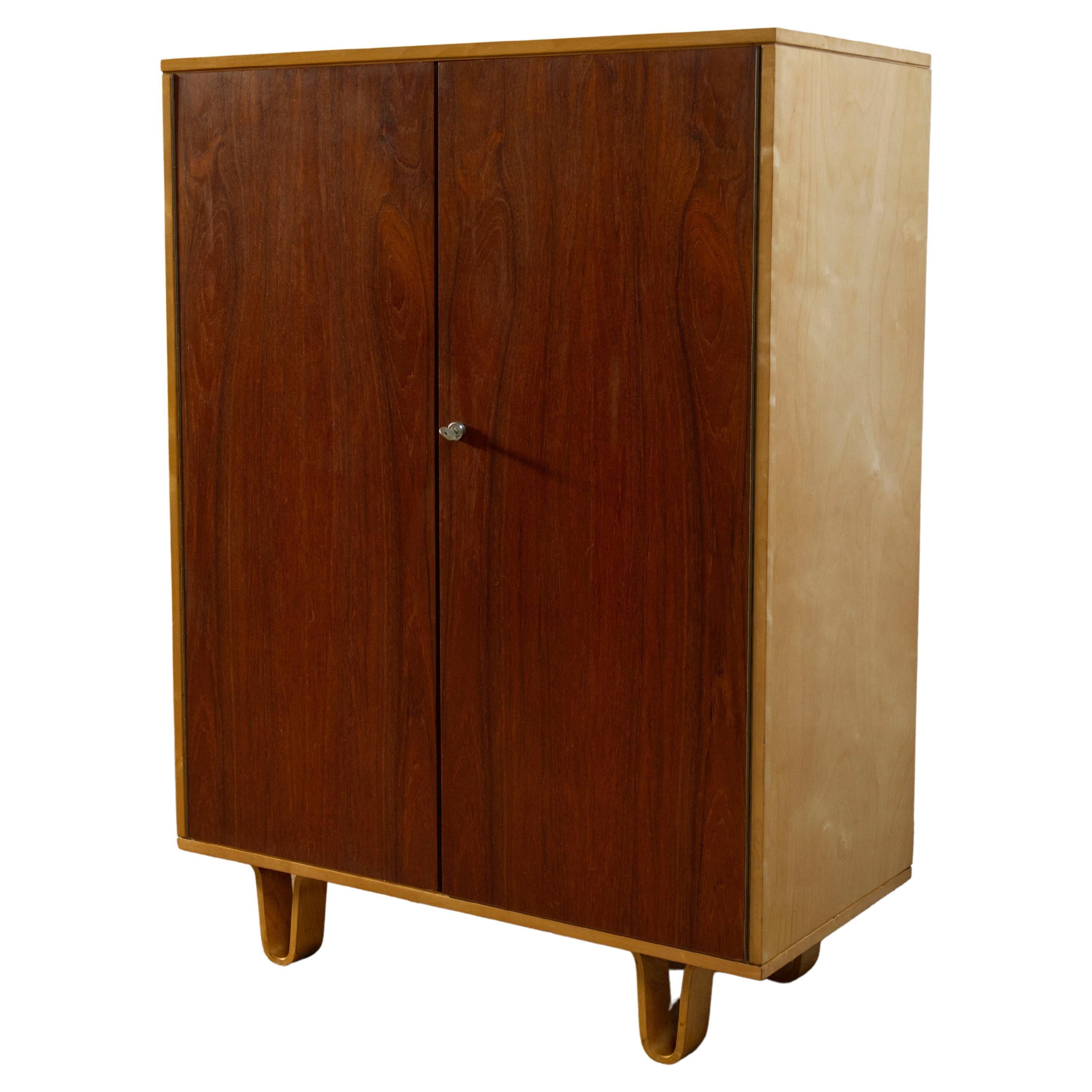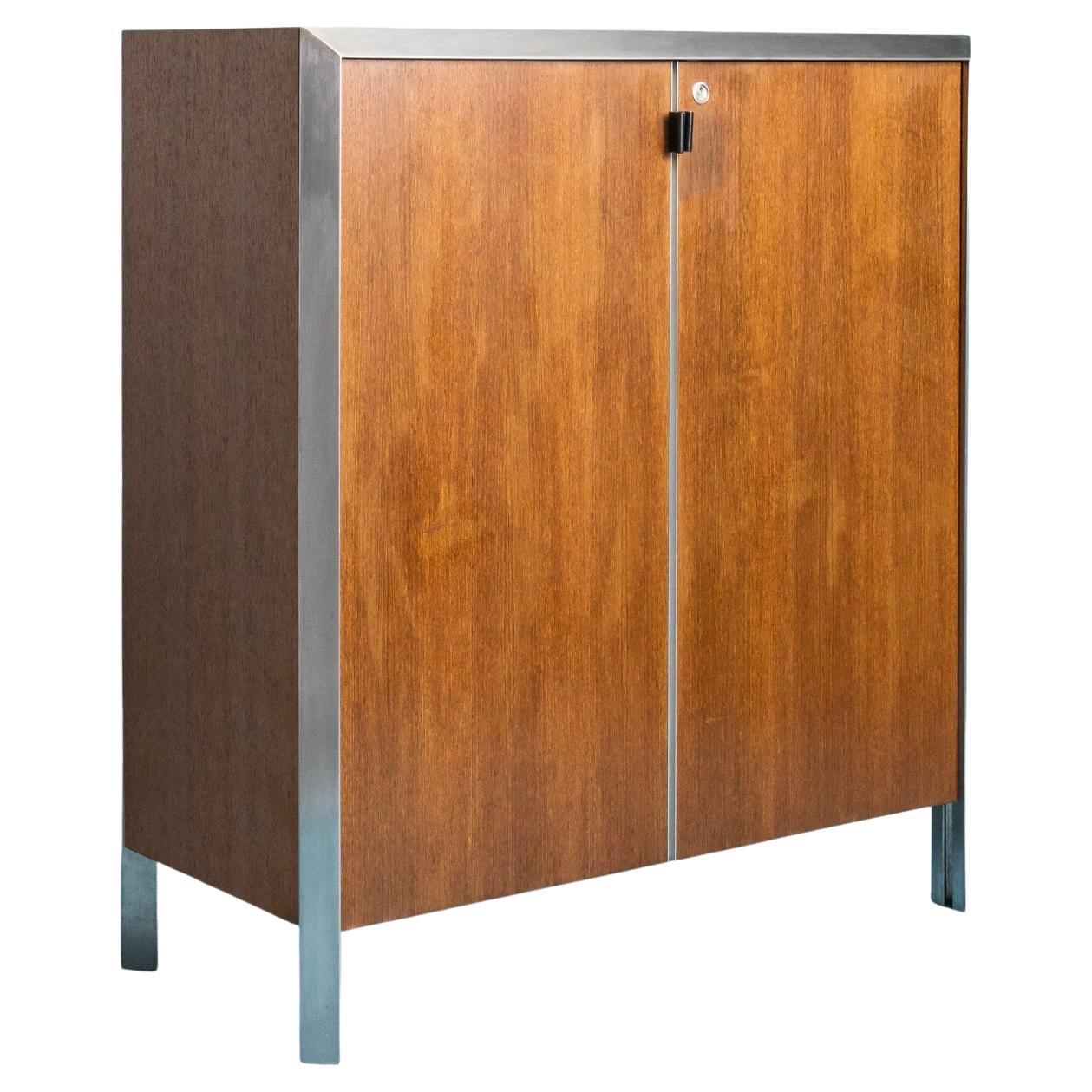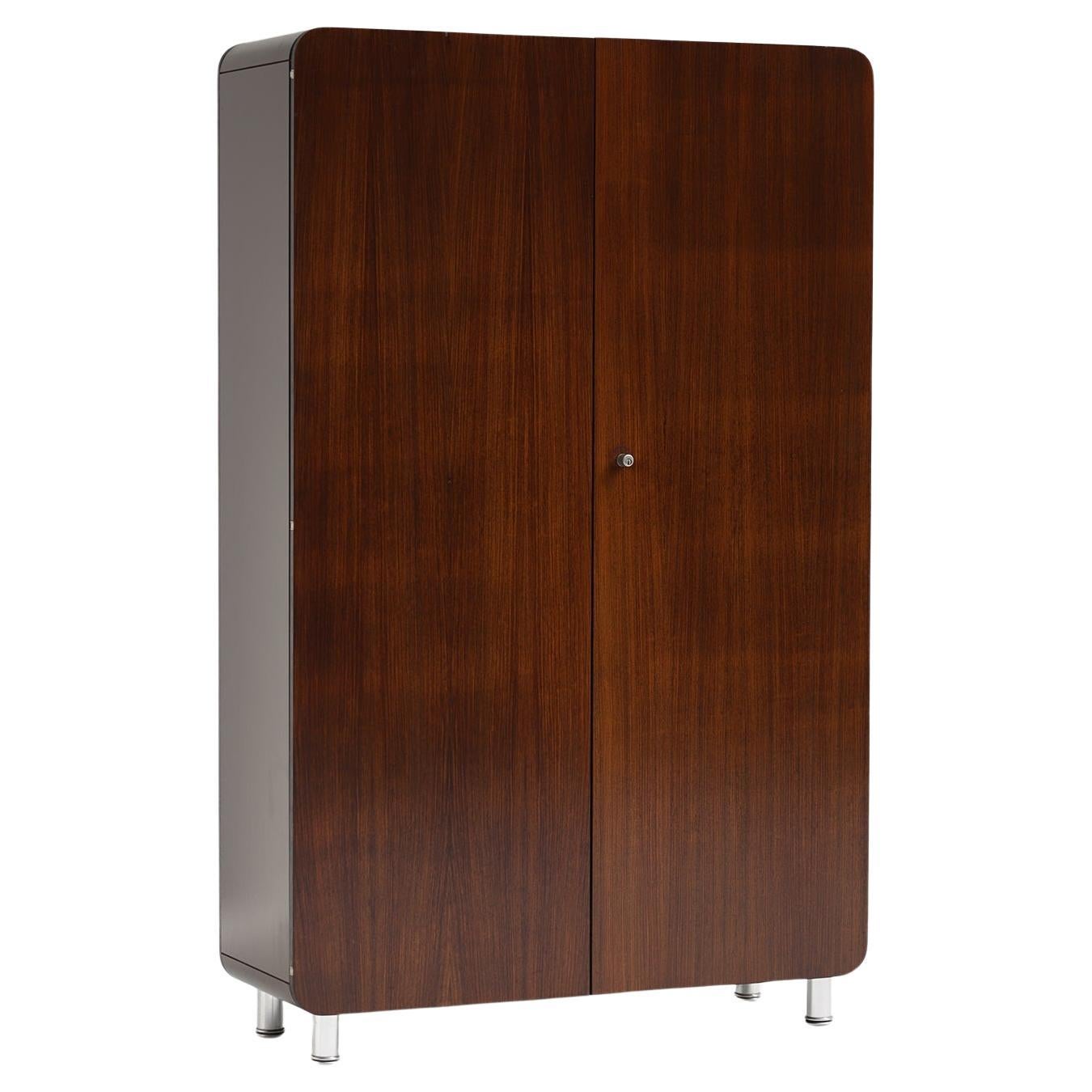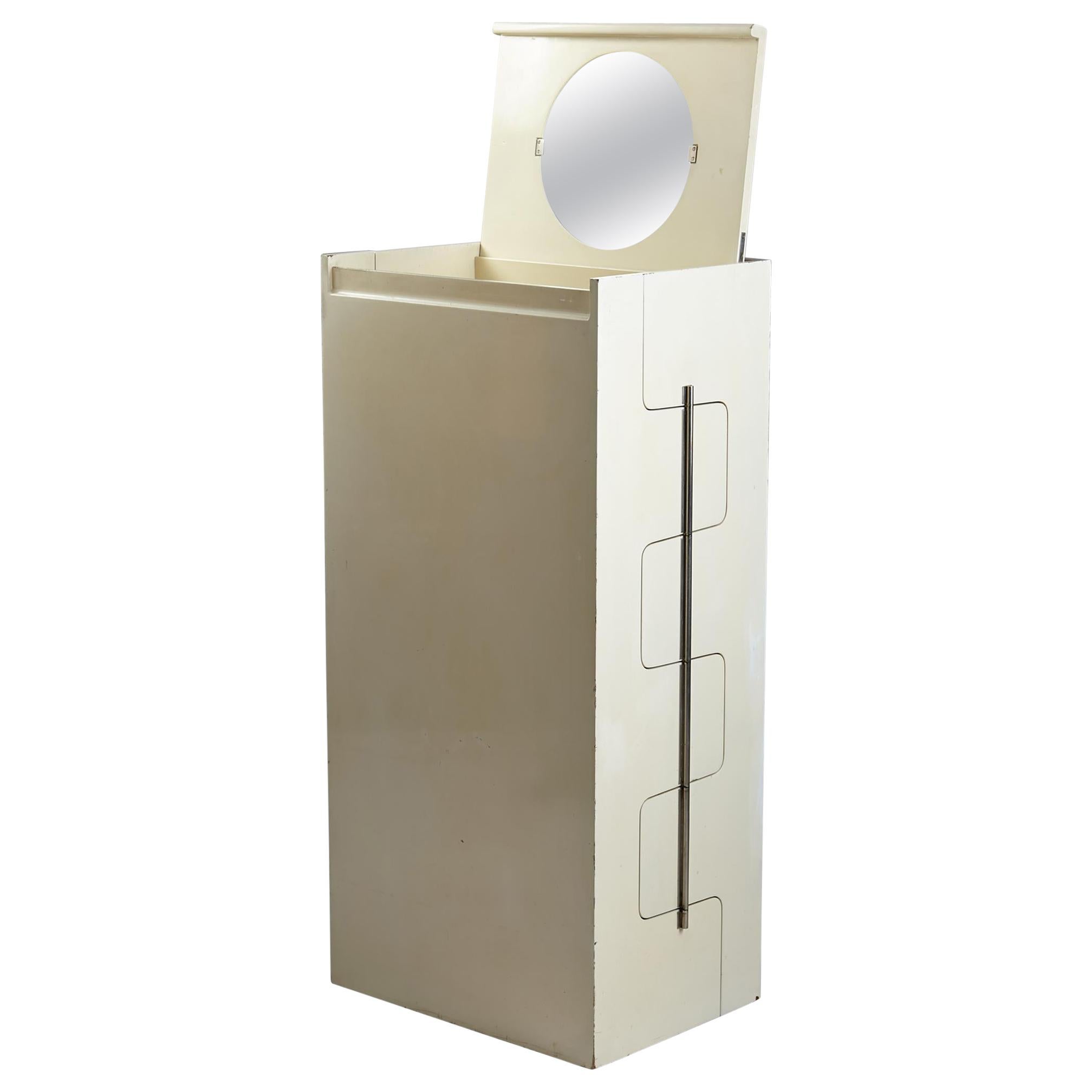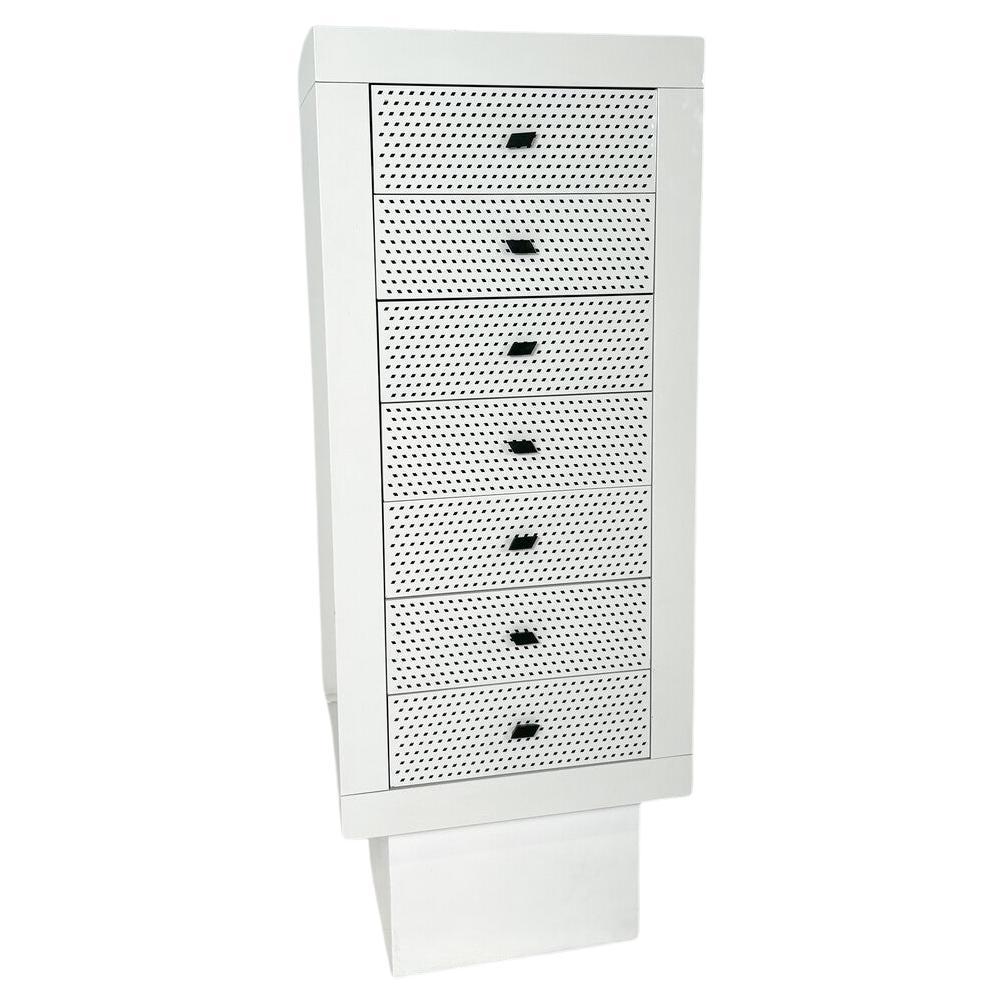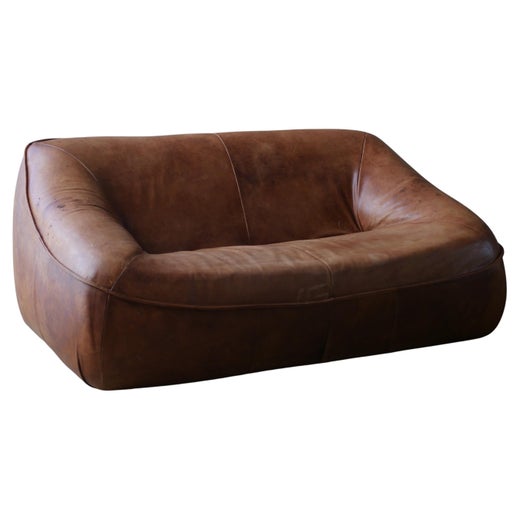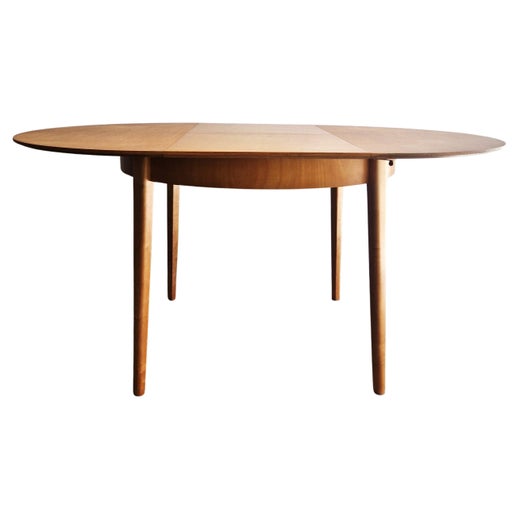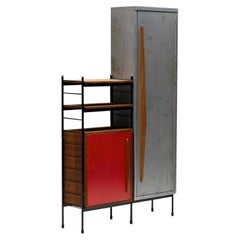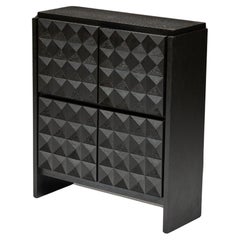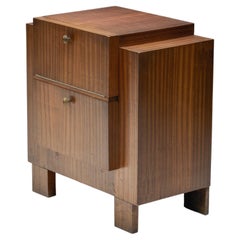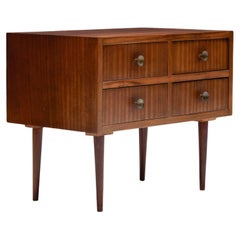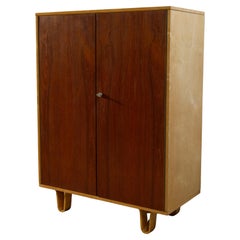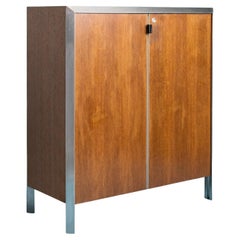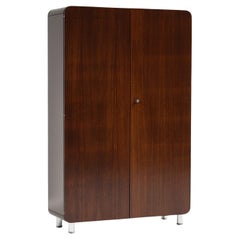Memphis Style Cabinet by Gerard Van Den Berg for Pastoe, Netherlands, 1980s
About the Item
- Creator:Gerard Van Den Berg (Designer),Pastoe (Manufacturer)
- Dimensions:Height: 61.03 in (155 cm)Width: 39.38 in (100 cm)Depth: 19.3 in (49 cm)
- Style:Post-Modern (Of the Period)
- Materials and Techniques:
- Place of Origin:
- Period:
- Date of Manufacture:1980s
- Condition:Wear consistent with age and use.
- Seller Location:Antwerp, BE
- Reference Number:Seller: GW08871stDibs: LU933431597592
Gerard Van Den Berg
Modern Dutch design owes a great deal to Gerard van den Berg. While the Netherlands has a rich furniture-making tradition, it took a maverick like Van den Berg to bring it into a new era. His innovative armchairs, lounge chairs and sofas offer a reinterpretation of mid-century modern Dutch designs and have found wide appeal among international customers.
Van den Berg was born in 1947 to a family of designers. His father owned a furniture company in Hellevoetsluis where Van den Berg worked as an apprentice and then designer until he and his brother, Ton, founded their own workshop, in 1974. That company, named Montis, produced mostly upholstered seating for homes and businesses.
At Montis, Van den Berg challenged traditional Dutch furniture forms. Rather than starting with the piece's frame, which he felt was restrictive, he focused on the silhouette. This inspired Van den Berg to create slim and elegant furniture, often featuring angular metal legs and leather upholstery. In 1983, he pioneered the "jacket technique," consisting of a zipped leather cover around a metal frame. Several iconic Montis seats use this technique, including the Chaplin chair, the Butterfly lounge chair and the Rocky sofa.
In 1989, Van den Berg launched his own design studio and began designing for companies like Wittmann, Molteni and Perobell. He left Montis in 1990 to cofound a new company, called Label, with Ton the following year. Label furniture captures the essence of no-nonsense Dutch design. It is comfortable and relaxed, featuring simple forms that are pleasing to the eye.
Van den Berg's irreplaceable contributions to furniture design have garnered multiple awards over the years. Some of the most notable include the Kho Liang Prize, the Mobilia Innovation Award and the Prize for Interior Architecture.
Today, Van den Berg's son Jasper and Ton's daughter, Marieke, manage Label. Van den Berg's other son, Ivo, is also a designer at the company.
On 1stDibs, find Gerard van den Berg seating, case pieces and more.
Pastoe
Dutch furniture company UMS Pastoe was established in 1913 by German-Jewish entrepreneur Frits Loeb and became rapidly successful largely owing to its reputation for well-made tables and chairs. Today, however, the brand is best known by collectors for the modular sideboards, storage cabinets and other spare, streamlined case pieces that it produced during the postwar years.
Influential mid-century modernist designer Cees Braakman had been creating furniture since his teenage years when he was promoted to head of design at Pastoe in 1948. The Utrecht-born designer took over for his father, Dirk Braakman, who had by then been managing the company for more than 20 years and had designed a variety of furnishings for the manufacturer by himself. A year before he assumed his new role at Pastoe, Cees visited the United States where he became enamored with the designs of Charles and Ray Eames and the other creative minds associated with legendary American furniture manufacturer Herman Miller.
While many Dutch designers who are now celebrated by vintage furniture collectors — names like Gerrit Rietveld and Friso Kramer are in this list — found inspiration in Piet Mondrian and the country’s De Stijl art movement, they also looked to Scandinavian modernists such as Alvar Aalto and Americans such as the Eameses. Cees Braakman was no different.
Braakman’s 1940s-era tour to the States included a visit to the Herman Miller factory in Zeeland, Michigan. At the time, architect-designer-journalist George Nelson was director of design at the firm and had enlisted a range of designers to collaborate with Herman Miller and create what are now icons of mid-century modernism. Braakman took notice of industrial manufacturing techniques at HM and in particular, the company’s innovations in furniture design owing to experimentation with molded plywood and fiberglass-reinforced plastic.
The Dutch designer introduced the first line of modern furniture at UMS Pastoe thereafter — a table, a chair, a bed and more created in molded plywood and featuring oak veneers, specifically tailored for smaller living spaces. Braakman was convinced that Pastoe should move on from the restrictions that a collection or set of furniture presented to consumers. Furniture for a bedroom, for example, should be practical and built as individual pieces that could be adapted as more space became available. New production methods and creative marketing came into focus under Braakman’s leadership, and his own lines of oak and birch furniture — which were created around cupboards that could be reconfigured as needed, or armchairs that could be combined to form a sofa — earned acclaim and were commercially very successful.
UMS Pastoe was recognized for its innovative furniture at the Milan Triennial in 1957 and Le Signe d’Or in Belgium, and Cees Braakman’s work can today be found at the Stedelijk Museum in Amsterdam. Over the years, designers such as Jan van Grunsven, Radboud Van Beekum and Rob Eckhardt collaborated with UMS Pastoe.
Find vintage UMS Pastoe furniture on 1stDibs.
- ShippingRetrieving quote...Shipping from: Antwerp, Belgium
- Return Policy
More From This Seller
View AllVintage 1950s Belgian Mid-Century Modern Cabinets
Metal
Vintage 1970s Belgian Brutalist Cabinets
Oak
Vintage 1930s Belgian Post-Modern Cabinets
Wood
Vintage 1930s Belgian Post-Modern Cabinets
Wood
Vintage 1970s French Mid-Century Modern Cabinets
Wood, Pine
Vintage 1980s Belgian Mid-Century Modern Bookcases
Metal, Aluminum
You May Also Like
Vintage 1950s Belgian Mid-Century Modern Cupboards
Steel
Vintage 1950s Dutch Mid-Century Modern Cabinets
Birch, Teak
Vintage 1960s French Mid-Century Modern Cabinets
Metal
Vintage 1970s Belgian Mid-Century Modern Cabinets
Wood, Formica
Vintage 1960s Swedish Scandinavian Modern Cabinets
Glass, Wood, Lacquer
Mid-20th Century Italian Mid-Century Modern Cabinets
Metal
